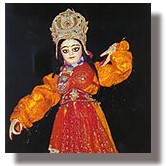[ad_1]
Puucho STATIC QUIZ 2020 – 21
Information
You have already completed the quiz before. Hence you can not start it again.
You must sign in or sign up to start the quiz.
You have to finish following quiz, to start this quiz:
-
Question 1 of 5
Which of the following pairs are correctly matched?
CorrectSolution: a)
Gandhara style of art which is heavily influenced by the classical Greek and Hellenistic styles, Gandhara attained its height from the 1st century to the 5th century CE under the Kushan Empire.
The Painted Grey Ware Culture probably corresponds to the middle and late Vedic period, i.e., the Kuru-Panchala kingdom, the first large state in the Indian subcontinent after the decline of the Indus Valley Civilization.
Pahari painting grew out of the Mughal painting.
Ajanta Painting belong to the Gupta period.
IncorrectSolution: a)
Gandhara style of art which is heavily influenced by the classical Greek and Hellenistic styles, Gandhara attained its height from the 1st century to the 5th century CE under the Kushan Empire.
The Painted Grey Ware Culture probably corresponds to the middle and late Vedic period, i.e., the Kuru-Panchala kingdom, the first large state in the Indian subcontinent after the decline of the Indus Valley Civilization.
Pahari painting grew out of the Mughal painting.
Ajanta Painting belong to the Gupta period.
-
Question 2 of 5
The 1000-year old heritage art – the Monpa Handmade Paper mainly belongs to
CorrectSolution: b)
The 1000-year old heritage art – the Monpa Handmade Paper of Arunachal Pradesh – which was driven to the extinction, has come to life once again, with the committed efforts of Khadi and Village Industries Commission (KVIC).
The art of making Monpa handmade paper originated over 1000 years ago. Gradually the art became an integral part of local custom and culture in Tawang in Arunachal Pradesh.
The Monpa handmade paper, will be made from the bark of a local tree called Shugu Sheng, which has medicinal values too.
IncorrectSolution: b)
The 1000-year old heritage art – the Monpa Handmade Paper of Arunachal Pradesh – which was driven to the extinction, has come to life once again, with the committed efforts of Khadi and Village Industries Commission (KVIC).
The art of making Monpa handmade paper originated over 1000 years ago. Gradually the art became an integral part of local custom and culture in Tawang in Arunachal Pradesh.
The Monpa handmade paper, will be made from the bark of a local tree called Shugu Sheng, which has medicinal values too.
-
Question 3 of 5
Consider the following statements regarding Putul Nautch.
- It is a traditional string puppet form of West Bengal.
- The puppets are about 3 to 4 feet in height and are costumed like the actors of Jatra.
Which of the above statements is/are correct?
CorrectSolution: b)
The traditional rod puppet form of West Bengal is known as Putul Nautch. They are carved from wood and follow the various artistic styles of a particular region. In Nadia district of West Bengal, rod-puppets used to be of human size like the Bunraku puppets of Japan. This form is now almost extinct. The Bengal rod-puppets, which survive are about 3 to 4 feet in height and are costumed like the actors of Jatra, a traditional theatre form prevalent in the State. These puppets have mostly three joints. The heads, supported by the main rod, is joined at the neck and both hands attached to rods are joined at the shoulders.
 Incorrect
IncorrectSolution: b)
The traditional rod puppet form of West Bengal is known as Putul Nautch. They are carved from wood and follow the various artistic styles of a particular region. In Nadia district of West Bengal, rod-puppets used to be of human size like the Bunraku puppets of Japan. This form is now almost extinct. The Bengal rod-puppets, which survive are about 3 to 4 feet in height and are costumed like the actors of Jatra, a traditional theatre form prevalent in the State. These puppets have mostly three joints. The heads, supported by the main rod, is joined at the neck and both hands attached to rods are joined at the shoulders.

-
Question 4 of 5
Consider the following statements regarding Odissi Dance.
- Odissi is a highly stylised dance and does not follow the tenets laid down by the Natya Shastra.
- For centuries mahariswere the chief repositories of this dance.
- The techniques of movement are built around the two basic postures of the Chowk and the Tribhanga.
Which of the above statements is/are correct?
CorrectSolution: b)
Odisha, on the eastern sea coast, is the home of Odissi, one of the many forms of Indian classical dance. Sensuous and lyrical, Odissi is a dance of love and passion touching on the divine and the human, the sublime and the mundane.
For centuries maharis were the chief repositories of this dance. The maharis, who were originally temple dancers came to be employed in royal courts which resulted in the degeneration of the art form.
Odissi is a highly stylised dance and to some extent is based on the classical Natya Shastra and the Abhinaya Darpana. In fact, it has derived a great deal from the Abhinaya Darpana Prakasha by
Jadunatha Sinha, the Abhinaya Chandrika by Rajmani Patra, and the Abhinaya Chandrika by
Maheshwara Mahapatra.
Odissi closely follows the tenets laid down by the Natya Shastra. Facial expressions, hand gestures and body movements are used to suggest a certain feeling, an emotion or one of the nine rasas. Odissi closely follows the tenets laid down by the Natya Shastra.
The techniques of movement are built around the two basic postures of the Chowk and the Tribhanga. The chowk is a position imitating a square – a very masculine stance with the weight of the body equally balanced. The tribhanga is a very feminine stance where the body is deflected at the neck, torso and the knees.
IncorrectSolution: b)
Odisha, on the eastern sea coast, is the home of Odissi, one of the many forms of Indian classical dance. Sensuous and lyrical, Odissi is a dance of love and passion touching on the divine and the human, the sublime and the mundane.
For centuries maharis were the chief repositories of this dance. The maharis, who were originally temple dancers came to be employed in royal courts which resulted in the degeneration of the art form.
Odissi is a highly stylised dance and to some extent is based on the classical Natya Shastra and the Abhinaya Darpana. In fact, it has derived a great deal from the Abhinaya Darpana Prakasha by
Jadunatha Sinha, the Abhinaya Chandrika by Rajmani Patra, and the Abhinaya Chandrika by
Maheshwara Mahapatra.
Odissi closely follows the tenets laid down by the Natya Shastra. Facial expressions, hand gestures and body movements are used to suggest a certain feeling, an emotion or one of the nine rasas. Odissi closely follows the tenets laid down by the Natya Shastra.
The techniques of movement are built around the two basic postures of the Chowk and the Tribhanga. The chowk is a position imitating a square – a very masculine stance with the weight of the body equally balanced. The tribhanga is a very feminine stance where the body is deflected at the neck, torso and the knees.
-
Question 5 of 5
Which of the following temples do have ‘Nagara Style of Architecture’?
- Modhera Sun temple
- Sun Temple at Konark
- Kandariya Mahadeva temple
- Ladkhan temple at Aihole
Select the correct answer code:
CorrectSolution: b)
• Ladkhan temple at Aihole have Vesara style of architecture.
IncorrectSolution: b)
• Ladkhan temple at Aihole have Vesara style of architecture.
Join our Official Telegram Channel HERE for Motivation and Fast Updates
Subscribe to our YouTube Channel HERE to watch Motivational and New analysis videos
[ad_2]

